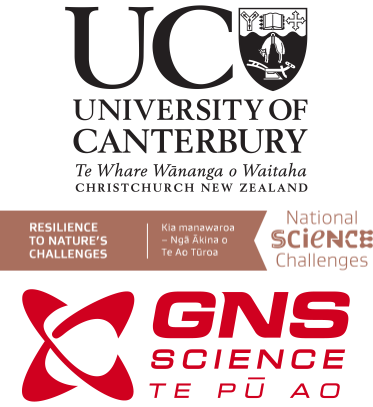Mount Ruapehu Summit Region and Rangataua Flows, New Zealand 2021
OT Collection ID: OT.062025.2193.1
OT Collection Name: Mount Ruapehu Summit Region and Rangataua Flows, New Zealand 2021
Short Name: NZ21_Ruapehu
Collection Platform: Airborne Lidar
| Point Cloud Data | Bulk Download | opentopoID: OTLAS.062025.2193.1 |

Lava flows carry a destructive power, and studies on past eruptions are necessary for improved hazard assessments. As part of a PhD project focused on improving our knowledge of the frequency and magnitude of postglacial lava flow eruptions, the Resilience to Nature’s Challenges program, in a collaboration with the University of Canterbury and GNS Science, funded the acquisition of this high-resolution airborne lidar dataset, which was collected by the Waterways Centre for Freshwater Management (University of Canterbury). This dataset has been collected in order to produce DSMs covering the summit region of Mount Ruapehu (Aotearoa New Zealand), as well as a large lava flow towards the south of the volcano, which is densely vegetated. These DSMs allowed the identification of distinct lava flows, many of which were dated using cosmogenic 3He and paleomagnetism, and the estimation of lava flow volumes, leading to an improved understanding of the eruption rate variation at Ruapehu during the last 20,000 years.
The data were collected in two separate surveys; an initial survey on the 14th of May 2021 that covered most of the region but missed a significant area on the eastern flanks of Ruapehu Maunga. A second survey, on the 2nd of November 2021 attempted to infill areas missed by the original survey. The data is not classified and includes a significant amount of noise. It is provided as-is, with no additional processing or validation.
Dataset Acknowledgement: N/A - Acknowledgement Guidance
Dataset Citation: Doll, P., Kennedy, B. M., Nichols, A. R. L., Cole, J. W., Townsend, D. B., Eaves, S. R., Conway, C. E., Leonard, G. S., Davidson, J., (2025). Mount Ruapehu Summit Region and Rangataua Flows, New Zealand 2021. Collected by University of Canterbury. Distributed by OpenTopography. https://doi.org/10.5069/G9VT1Q92. Accessed 2025-11-27 Copied to Clipboard
Use License: CC BY 4.0
Dataset Keywords: Volcano, lava flow, lava flows, New Zealand, Ruapehu
Survey Date: 05/14/2021 - 11/02/2021
Publication Date: 06/17/2025
Funder Partners Collector
Area: 95.98 km2
Point Density: 85.43 pts/m2
Classifications:
| Class 0 - Never classified | 7,914,722,811 |
| Class 1 - Unclassified | 146,329,416 |
| Class 2 - Ground | 121,395,198 |
| Class 7 - Low Point (low noise) | 4,908 |
| Class 11 - Road Surface | 17,405,714 |
| Class 31 - Reserved | 7,491 |
Coordinate System:
Horizontal: NZTM2000 NZGD2000 Meters [EPSG: 2193]
Vertical: NZVD2016 [EPSG: 7839]
Units: meter
Survey Report: Reports
LAS Validation Data Report: Reports
Dataset Boundary in GeoJSON Format: NZ21_Ruapehu.geojson
Dataset Extent (Bounding Box): North: -39.245783941015006° South: -39.45036311284622° East: 175.62178206204723° West: 175.51476691606726°
